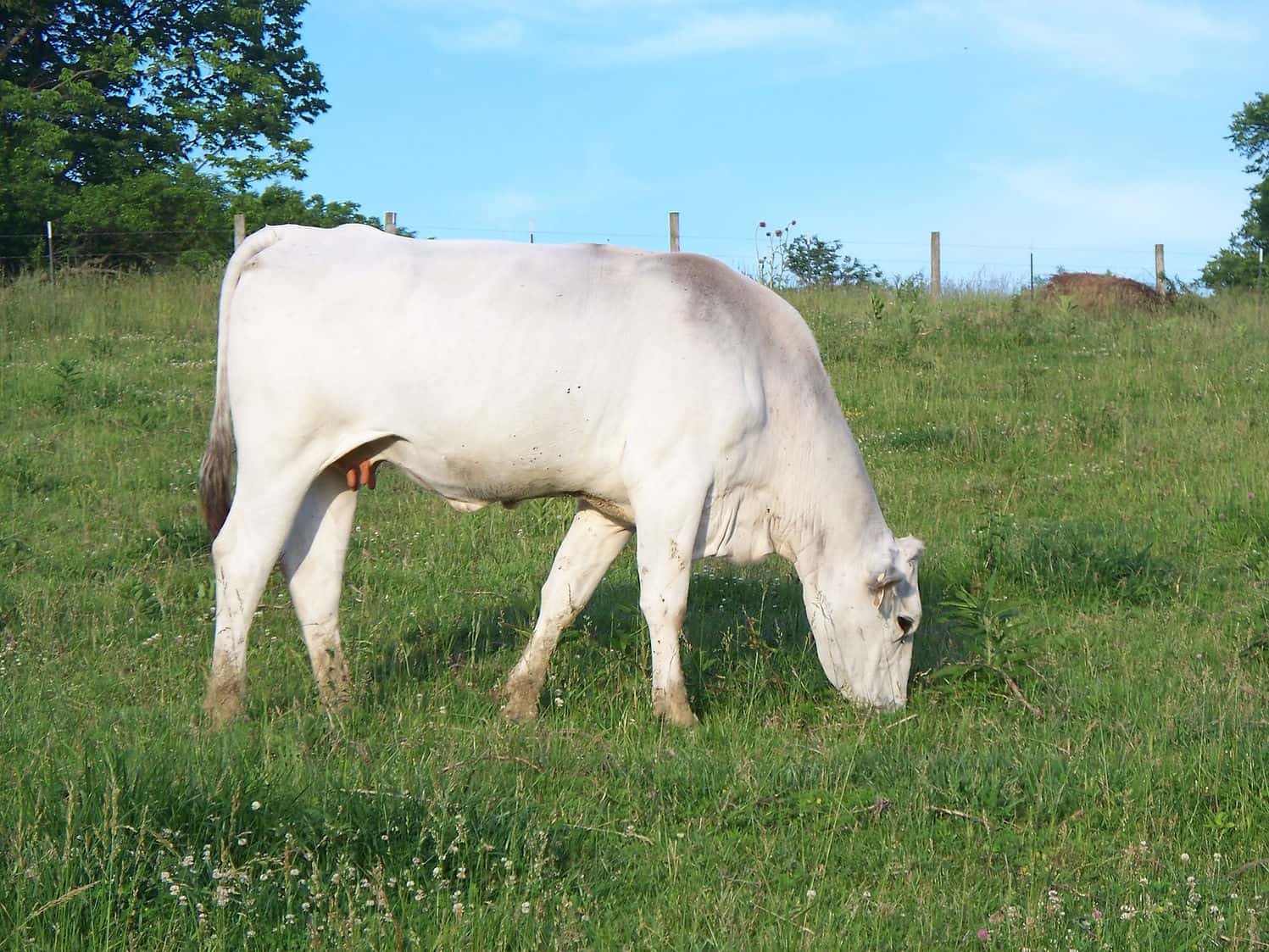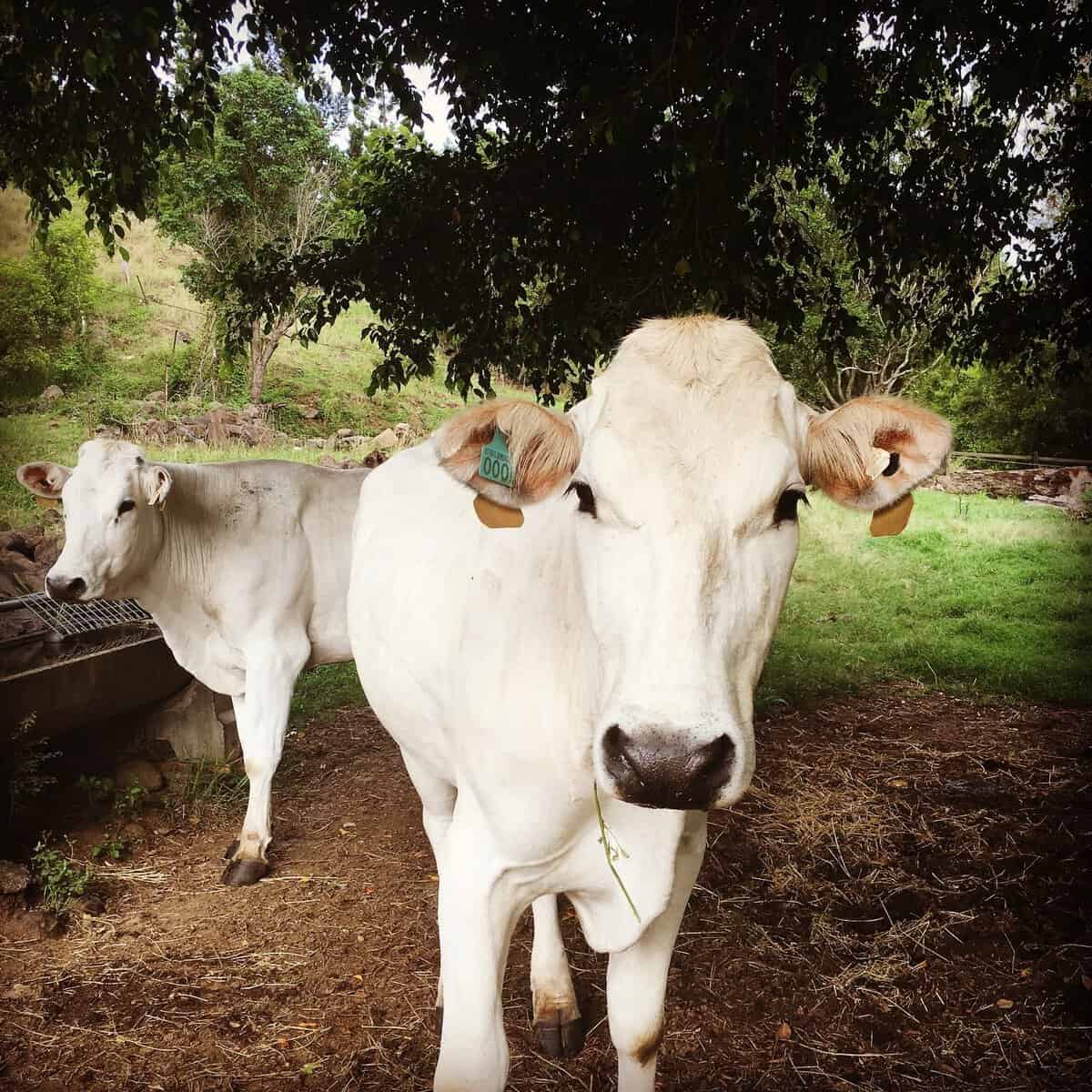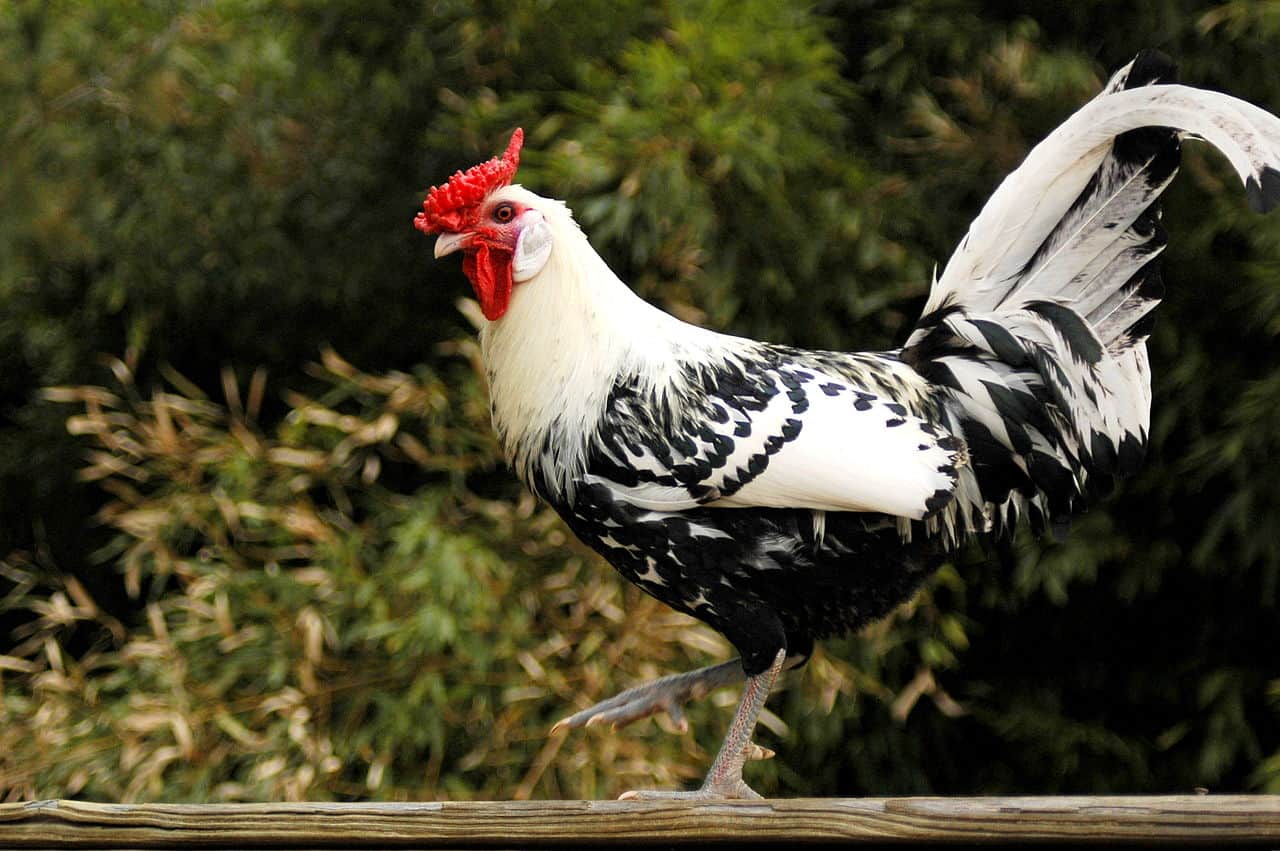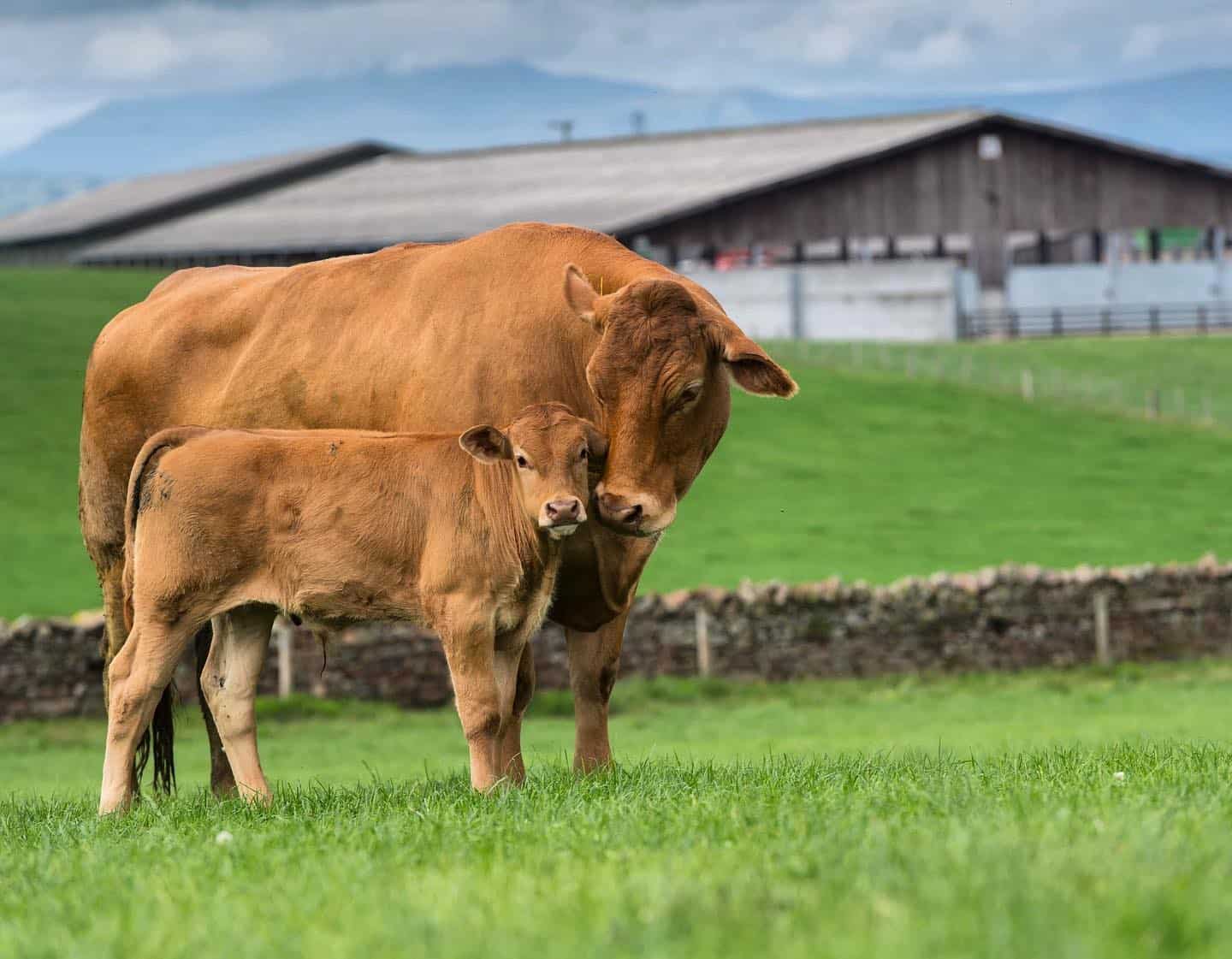The post Chianina Cows – Everything You Should Know appeared first on AgronoMag.
The Chianina cow is easily one of the most interesting cow breeds in the world right now
It hails from Italy, where it was used as a draft and meat animal ever since the days of Etruscans and ancient Rome.
But that’s not the oldest records we have of Chianina cows in known history. These cows were also spotted during the Bronze Age, around Africa and Asia.
The rabbit hole goes even further than that though. We have no real clue when we originally came across the first Chianina cows.
What we do know though is that they are still a viable choice for a lot of people nowadays.
So, if you’re interested in getting your hands on a Chianina cow or two, then it’s your lucky day. In this article, we will be going over everything you should know about Chianina cows.
With that being said, let’s start with the beginning:
History and Origins
 valdichianaliving.it
valdichianaliving.it
The oldest records we have of the Chianina cow breed stem from Italy’s beautiful Valdichiana. This is also where the breed got its name from.
These cows made quite a name for themselves in the Italian regions of Tuscany, Umbria, and Lazio. They became a very proficient part of their culture for at least 2,200 years now.
Chianina cows were originally used as a source of agricultural power thanks to their large size and overwhelming strength.
This quickly changed as soon as mechanization and the fall of the mezzadria system happened.
While the breed remained unchanged for thousands of years, something needed to be done. This is because the interest rates for the Chianina cow breed were at an all-time low.
So, in 1931 the breeders got together to change the breed for good. Here is what they were aiming for:
Better meat production Shorter limbs Longer bodies More heavily muscled thighs and rumpsAs the years rolled on by, the breeders also based their efforts on the following results:
Faster growth rate Higher meat yield Improved maternal abilityThe Chianina cow breed quickly made a name for itself around the world for its adaptability and hardiness.
The main reason behind this is its survival during the malaria age in the past. This provoked a kind of natural selection that made it so only the hardiest and strongest animals passed on their genes.
Nowadays, the Chianina cow breed is revered as one of the most comfortable options around.
 livestockpedia.com
livestockpedia.com
These cows are very hardy, they’re low-maintenance animals and they yield a lot of profit.
Their meat is prominently used in restaurants and they are known for being a good option for families too.
A great majority of the modern Chianina cows can be found in Arezzo, where 6,000 heads reside.
Ever since the 1960s, the Chianina cows were specifically bred for the production of high-quality meat.
The main reason behind this choice is that agricultural tasks became even more mechanized.
So, to save the breed from going extinct, efforts were made to enhance its best-selling point.
In 1966, a register was created by the National Association of Beef Cattle Breeders. Here is what they were aiming for:
To improve their muscle mass To improve their speed of growth To refine the main selling characteristics of the breedMain Characteristics of the Chianina Cows
 sylviaitaly.com
sylviaitaly.com
As one of the largest cattle breeds in the world, the Chianina cows have a lot to live up to.
This is especially true because they are also the tallest and heaviest breed of cattle.
While they usually come in white, there are also a lot of grey Chianina cows that you can come across in Italy.
Chianina cows also have very slight grey shading around their eyes and on the foreparts.
It is a horned breed, so if you were hoping to come across a polled Chianina cow, you’re out of luck sadly.
Their skin, hooves, switch, muzzle as well as the tips of their horns will always be black.
Their horns have the following traits:
They are quite short They are curved forwards They are black colored but as they grow older, they tend to become lighter Monti Bianchi Chianina Stud Farm / facebook.com
Monti Bianchi Chianina Stud Farm / facebook.com
By far their most defining trait is their extensive and well-defined muscling.
These used to be very strong draft animals so they have no problem packing on a lot more muscle than the average cow.
Their shoulders are also worth noting, as they are almost unnaturally well-formed.
Their legs are longer than the average cattle breed, and their faces tend to be both long and straight at the same time.
While they are very large animals, their udders are very small compared to the rest of their physique.
They can be used for milk production, although it is not recommended.
Due to their large frames, they need a lot of food to get through the day.
So, disregarding their size and instead only raising them for their milk is not recommended in the slightest.
Chianina Cows Appearance
 Photo by Christiaan de Jager / O-LA-LA Chianina / facebook.com
Photo by Christiaan de Jager / O-LA-LA Chianina / facebook.com
Chianina cows are some of the largest cattle you will ever come across. As far as their color spectrum is concerned, they are either white or gray.
Both the cows and the bulls sport black skin alongside black horns and a black tail. Their horns are categorized as small, and they turn lighter as the animals age.
Their heads are long and straight, and their bodies are extremely muscular.
Their legs and feet are long and strong, which is a testament to their old draft days.
The calves are usually born light brown, and as they age their color changes to white or gray depending on their genes.
Chianina Cow Size
 Valdichiana Living / tripadvisor.com
Valdichiana Living / tripadvisor.com
Chianina cows are very large, they usually range between 2,000 and 2,200lbs or 900 to 1000kg each.
The bulls on the other hand are even larger. They tend to weigh around 2,800 to 3,000lbs or 1270 to 1360kg each.
As far as their other measurements are concerned, Chianina cows tend to stand at 5ft or 1.52m tall.
The bulls are again on the larger side of the spectrum, reaching heights of up to 5ft8 or 1.72m each.
Milk Production
 champagnefarm.com
champagnefarm.com
While they are proficient meat producers, Chianina cows are fairly lackluster in terms of milk production.
They have very small udders which is a telltale sign of the fact that they were never bred to be dairy animals.
Instead, these cows were primarily bred for the following uses:
For work purposes as draft animals As beef producersDuring the first three months after calving, most Chianina cows will produce around 3 gallons of milk daily.
There are a few strains of Chianinas out there that can produce around 5 gallons of milk per day too.
Keep in mind that these cows tend to cost a bit more and are a lot harder to come by.
Still, you can get your hands on them, you just need to find a specialized seller or breeder.
Chianina Cattle Breeding
 Chianina Cattle Australia / facebook.com
Chianina Cattle Australia / facebook.com
Bulls are especially sought-after for breeding purposes.
This is mostly because they are a very popular choice when it comes to creating better animals with the following traits:
A hybrid vigor Faster growth ratesOn top of that, Chianina cows are known for having a lot of advantages that can be passed on to their offspring.
For example, they have a higher twin rate and they’re known for their ease of calving.
You should also know that while most cows’ gestation period is nine months, this does not apply to Chianina cows.
Their gestation period tends to last a few days or even a few weeks longer than the average cow’s.
They more than make up for this by being free of genetic diseases though.
This is a huge selling point for Chianina cows as they can be safely crossbred with most other cow breeds.
At the same time, they don’t have any bad traits that they pass on to their offspring outside of the longer gestation period.
Chianina Cattle Temperament and Behavior
 Monti Bianchi Chianina Stud Farm / facebook.com
Monti Bianchi Chianina Stud Farm / facebook.com
One of the biggest selling points of the Chianina cow breed is its docile temperament.
These cows are known for being very easy to take care of, especially so for beginners.
Back in the day, they were used as draft animals by people that had little to no experience raising them.
Still, they made for a great pick since they were large and strong enough to handle most field work around.
So, they were used a lot back in the day, which led to them becoming very docile and friendly animals.
While it isn’t a guarantee, their docile temperament can also be passed on to their offspring in most cases.
Chianina Cow Hardiness
 Photo by Michele Palmieri / pixabay.com
Photo by Michele Palmieri / pixabay.com
As mentioned, Chianina cows are extremely hardy, to the point where they very rarely have any health scares.
They are also known for being able to survive in areas with little to no pasture.
They have very long legs and tough hooves too, which helps them walk longer distances without a problem.
This trait is mostly thanks to the fact that they had to walk long distances during drought to find food and forage.
On top of that, the fact that they lived in Italy for so long is a testament to their heat tolerance.
These cows can do it all, and more. This is not to say that they never get sick, just that they tend to be very hardy as a breed.
This hardiness can also be passed on to their offspring too, which is a very sought-after feature.
Chianina Meat Production
 O-La-La Chianina / facebook.com
O-La-La Chianina / facebook.com
When it comes to the meat production of the Chianina cow breed, it is one of the best options out there.
What makes it unique is that it is one of the few breeds that does not benefit from force-feeding.
This makes investing in Chianina cows a very ethical choice to make since it means you’re not supporting their abuse.
Instead, the bullock can be butchered around 20 months in, based on the following:
Their meat must have high levels of organoleptic properties It also needs to have specific nutritional values that they only gain at the 20-month markThe meat is usually described as such:
Lean Juicy TenderTheir meat also has high protein and is low in cholesterol. This makes it a very popular choice for those that have to do physically demanding jobs daily.
It is most popularly used as a classic steak, but it is also used in a lot of local dishes such as the following:
Il lesso Spezzatino Stufato Tossobuco Trippa Il SugoChianina beef is also very popular amongst those that practice sports. This is because Chianina beef has high amounts of nutrients while also being very light and easy to digest.
Older people also revel in the fact that Chianina meat has fewer calories as well as more protein than the average meat.
Couple that with the low levels of cholesterol and you can quickly see why Chianina meat is so beloved in Italy and around the world.
Should You Get a Chianina Cow?
 Photo by Leonardo Arenare / pixabay.com
Photo by Leonardo Arenare / pixabay.com
If you are primarily looking for a cow that can achieve the following goals, consider getting yourself a Chianina cow:
A large beef yield A good draft cow A low-maintenance animal A decent milk producer A good option for breeding purposesAt the same time, you should stay far away from the Chianina cow breed if you are looking for the following:
An affordable cow A great dairy option An easily accessible cowHow Much Does a Chianina Cow Cost?
 Chianina Vallemichele / facebook.com
Chianina Vallemichele / facebook.com
Before we answer this question, we first need to explain why we may be wrong.
This is because the price fluctuates a lot based on certain factors that we can’t predict without necessary background info.
Still, you can assess how much you can expect to pay for your Chianina cow by considering the following:
Age – Younger Chianina cows are always going to cost less than mature cows Pedigree – The Chianina cow’s lineage will influence its final price. Purebreds cost a lot more than both crossbred and mixed breeds Location – If you happen to be living in Italy, Chianina cows will be a lot cheaper than if you need to have the cows imported to your general location Current market conditions – The market demand and supply drive the final price of the Chianina cow, as it does to any other commodityWith that being said, the average Chianina cow will cost you between $2,500 and $5,000.
The price can range a lot based on the aforementioned factors though.
Before you purchase the cow, you should always research the breeder or seller. After all, if you buy a sickly animal, it doesn’t matter if you saved a lot of money in the process, it is a bad purchase.
On top of that, do not forget to factor in the following too:
The food costs The health checkups The shelter costsConclusion
The Chianina cattle are always going to make for a great option thanks to their hardiness.
Even if other options offer you more marketable meat, very few breeds can match its health benefits.
So, if you are looking for a docile cow breed that is easy to handle, do not miss out on the Chianina cow breed.
They are also excellent foragers and are a lot more resistant to insects and diseases than other domestic breeds.
While they are not the best milk producers, they can still produce enough to care for their calves.
The post Chianina Cows – Everything You Should Know appeared first on AgronoMag.











